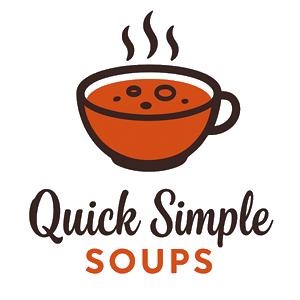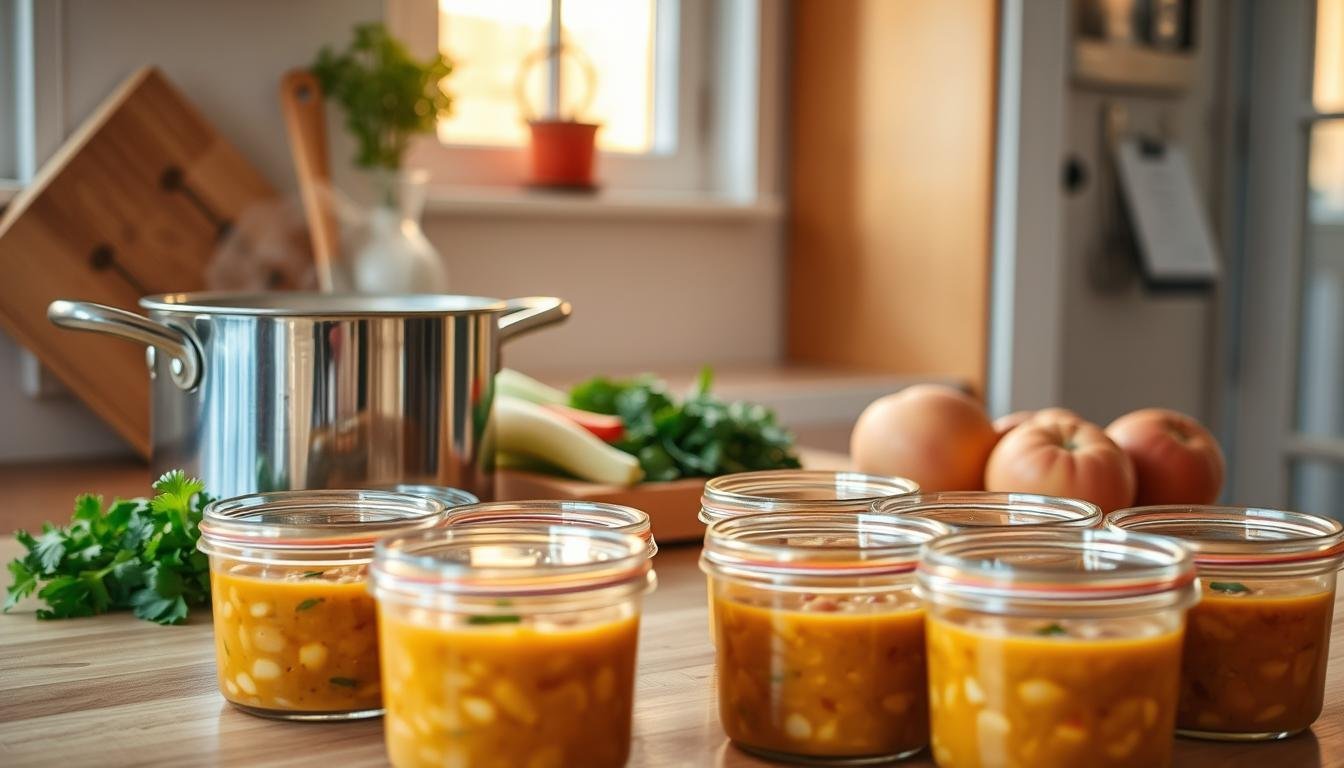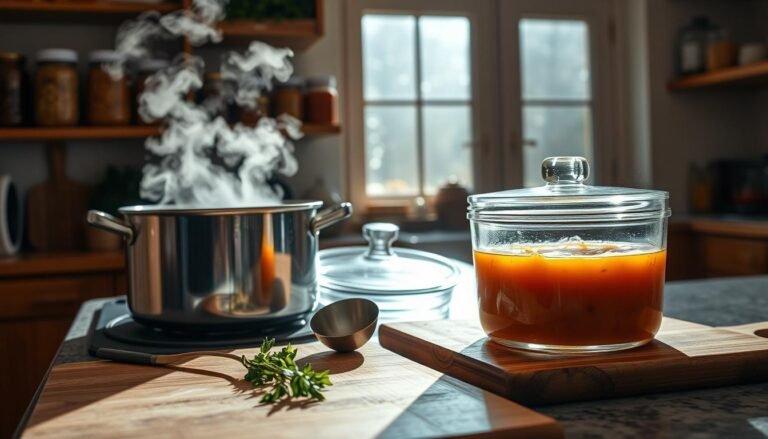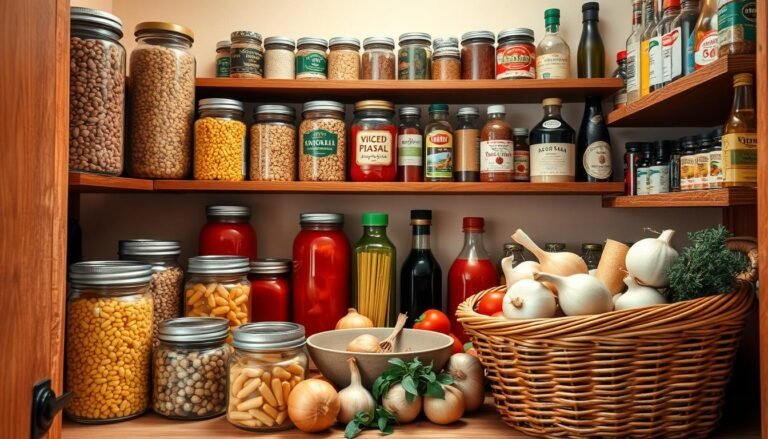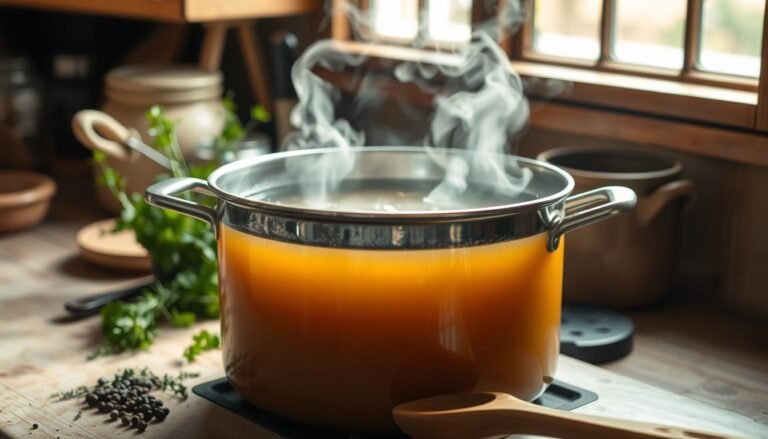Disclosure: This Post Contains Affiliate Links; We earn a commission on purchases.
Freezing soup saves time and money. It helps keep your diet healthy. Meal prepping soup is great for busy lives. It offers flexibility and convenience.
Want to freeze soup like a pro? Learn the right ways to prepare, store, and reheat it. Check out this guide on freezing soup. With these steps, you’ll be a pro at meal prepping soup.
Key Takeaways
- Understand the benefits of freezing soup for meal prep.
- Learn proper techniques for preparing and storing soup.
- Discover effective methods for reheating frozen soup.
- Explore tips for maintaining the quality of frozen meals.
- Master the art of meal prepping soup for a healthy diet.
Why Freezing Soup is Perfect for Meal Prep
Freezing soup is great for meal prep. It saves time and money. You can enjoy healthy meals all week without daily cooking.
Benefits of Batch Cooking Soups
Batch cooking soups is efficient. You cook a lot at once. This saves time in the kitchen during the week.
Batch cooking soups also cuts down on food waste. You use up ingredients before they go bad.
Time and Money Savings
Freezing soup saves a lot of time. You have meals ready to reheat. This means less time spent cooking.
Buying ingredients in bulk also saves money. It makes each serving cheaper.
Nutritional Advantages of Homemade Frozen Soups
Homemade frozen soups are nutritious. They can have lots of veggies, lean proteins, and whole grains. This ensures a balanced diet.
Freezing also keeps nutrients in the soup. This makes it a healthy choice for meal prep. Plus, you can make soups to fit your dietary needs.
In short, freezing soup is a smart meal prep choice. It offers batch cooking, time and money savings, and nutritional benefits. It’s perfect for those who want to make meal prep easier.
Preparing Soups for Freezing: A Complete Guide to Freezing Soup for Meal Prep
To freeze soup well, you need to prepare it right. Choose the best soups, cool them down, and portion them. This makes defrosting easy.
Which Soups Freeze Well (and Which Don’t)
Not all soups freeze the same. Knowing which ones freeze best is key to keeping them tasty.
Cream-Based vs. Broth-Based Soups
Cream-based soups can be tricky to freeze. They might change texture. Broth-based soups usually freeze better. But, some cream soups can freeze well if you handle them right.
Ingredient Considerations
Some ingredients, like dairy products or high-water content vegetables, can mess with soup texture after freezing. Think about these when making soups for freezing.
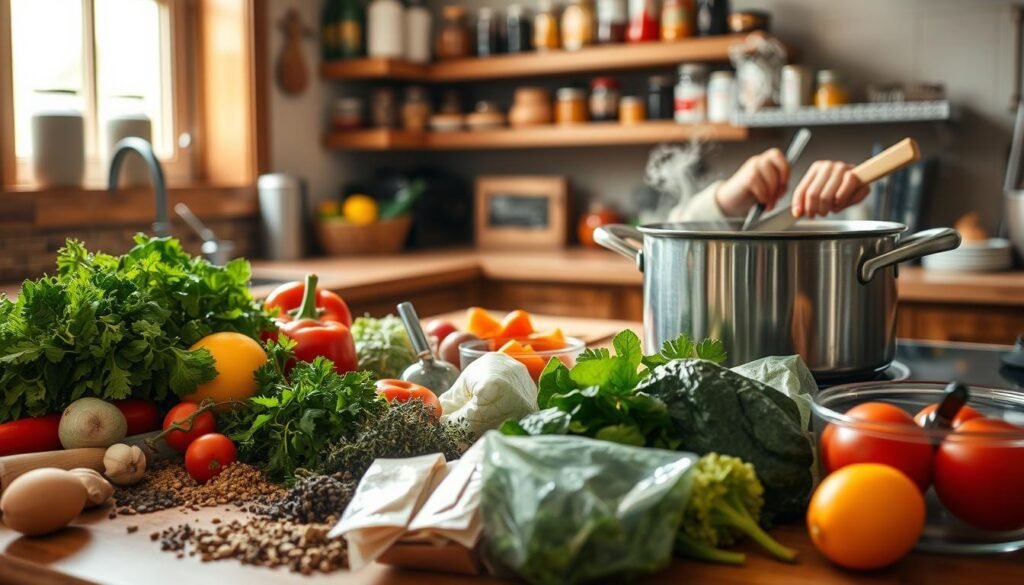
Cooling Soup Properly Before Freezing
Cooling soup fast is important for food safety. Use shallow containers and ice baths to cool it down quickly.
Portioning Tips for Convenient Defrosting
Freezing soup in single servings is handy. It’s easier to thaw and reheat just what you need. Use airtight containers or freezer bags for storing.
- Divide soup into single servings
- Use airtight containers or freezer bags
- Label containers with the date and soup name
Adding Fresh Ingredients After Thawing
Adding fresh herbs or other ingredients after thawing can improve flavor and texture. It makes the soup taste fresh again.
Food Safety Considerations
Freezing and reheating soup needs to follow food safety guidelines. Always label frozen soup with the date and contents. Reheat it to a safe temperature.
Best Containers and Storage Methods
Freezing soup right is key for keeping it tasty and safe. The right containers and storage methods help a lot. They keep the soup’s flavor and nutrients good.
Container Options: Plastic vs. Glass vs. Silicone
Choosing a container depends on what you like, the soup type, and how much space you have. Plastic containers are light and cheap but might have BPA. Glass containers are safe and good for freezing and reheating, but they’re heavy and can break. Silicone containers are bendy, easy to clean, and save space when collapsed. Check out our recommended products page for the best ones.
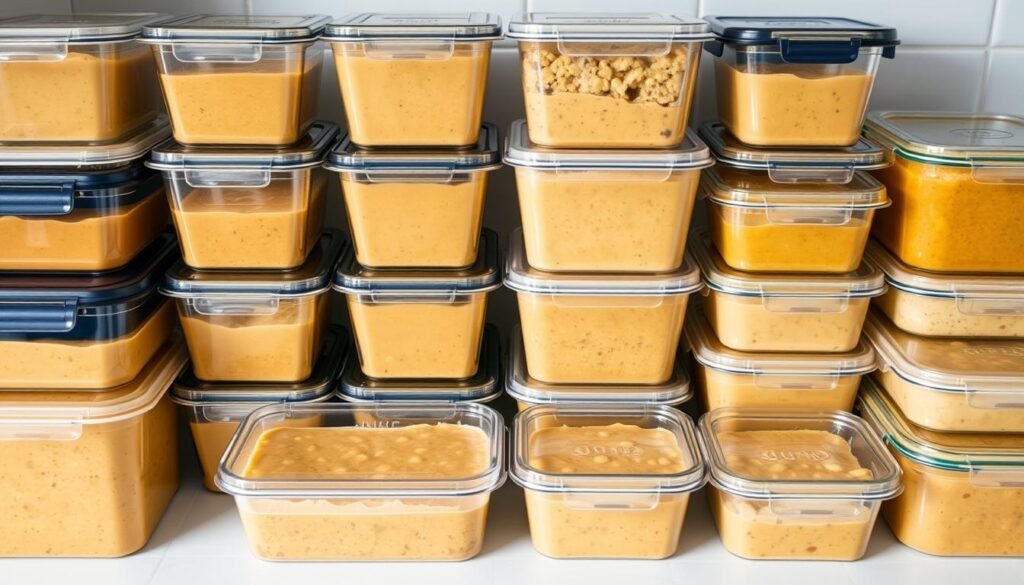
Space-Saving Storage Techniques
To save freezer space, freeze soup flat in zip-top freezer bags. This makes it easy to store and thaw. You can also stack stackable containers to fit more soup in less space.
Labeling Systems for Organized Freezers
Labeling frozen soup is key for keeping things tidy and safe. Use permanent markers or label stickers to mark each container or bag clearly.
Freezer Shelf Life for Different Soup Types
How long soup lasts in the freezer depends on its type and ingredients. Clear soups can last up to 6 months. Creamy soups might only last 3-4 months. Always check the soup for spoilage before eating it.
Thawing and Reheating Frozen Soup
Thawing and reheating frozen soup needs care to keep it tasty and nutritious. Using the right methods can make your meal prep just as good as the first time.
Safe Thawing Methods
When thawing frozen soup, safety is key. There are two main ways: refrigerator thawing and quick thawing.
Refrigerator Thawing
Refrigerator thawing is safe. Move the soup from the freezer to the fridge to thaw slowly. This method stops bacteria from growing.
Quick Thawing Techniques
For faster thawing, submerge the soup in cold water. Change the water every 30 minutes. This method is quicker but needs more watching.
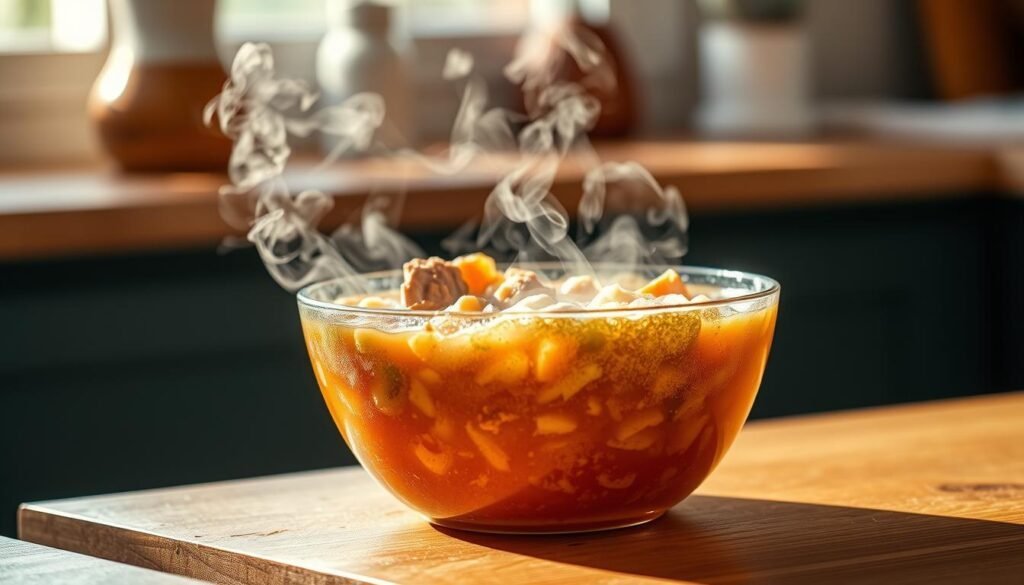
Reheating Techniques That Preserve Flavor
There are many ways to reheat soup, each with its own benefits. The goal is to reheat it gently to keep the flavor and texture.
Stovetop Reheating
Stovetop reheating brings back the soup’s original taste. Heat it on low to medium, stirring often, until it’s hot.
Microwave Reheating
Microwave reheating is fast and easy. Use a safe container, cover it, and heat in short bursts, stirring between each.
Slow Cooker Method
The slow cooker is great for reheating soup while you’re out. Just put the thawed soup in the slow cooker and heat on low for hours.
Fixing Common Issues with Reheated Soups
Reheated soup can sometimes get too thick or lose flavor. Add broth or water to thin it and adjust the seasoning.
Adding Fresh Elements to Enhance Reheated Soups
To make reheated soup taste better, add fresh herbs, spices, or lemon juice. These can make the soup taste like it’s just been made.
Conclusion: Maximizing Your Soup Freezing Success
Freezing soup is a great way to enjoy tasty, healthy meals all week. It’s a smart meal prep strategy that saves time and money. Plus, it helps reduce food waste.
Try a “make ahead soup” routine. Make big batches on weekends or one day a week. Then, portion them out for later meals. This way, you always have nutritious meals ready to go.
Follow this guide to freeze soup like a pro. It’s perfect for saving time, cutting down on waste, or just eating well. Freezing soup is a smart choice for anyone looking to make mealtime easier.
FAQ
What types of soup freeze well?
How do I cool soup quickly before freezing?
What are the best containers for freezing soup?
How long can I store frozen soup?
How do I reheat frozen soup safely?
Can I freeze soup with dairy or cream?
How can I prevent freezer burn when freezing soup?
Can I freeze soup in a glass jar?

Ryan Conlon is the comfort food fan behind QuickSimpleSoups.com, where he shares easy soup ideas, smart shortcuts, and helpful tips for busy home cooks. Ryan believes a good bowl of soup doesn’t need to be complicated—and he’s here to prove it. Whether you’re looking for quick weeknight meals or cozy classics with a twist, Ryan’s simple approach helps you serve up satisfying soups with minimal effort.
Subscribe to Our Newsletter
